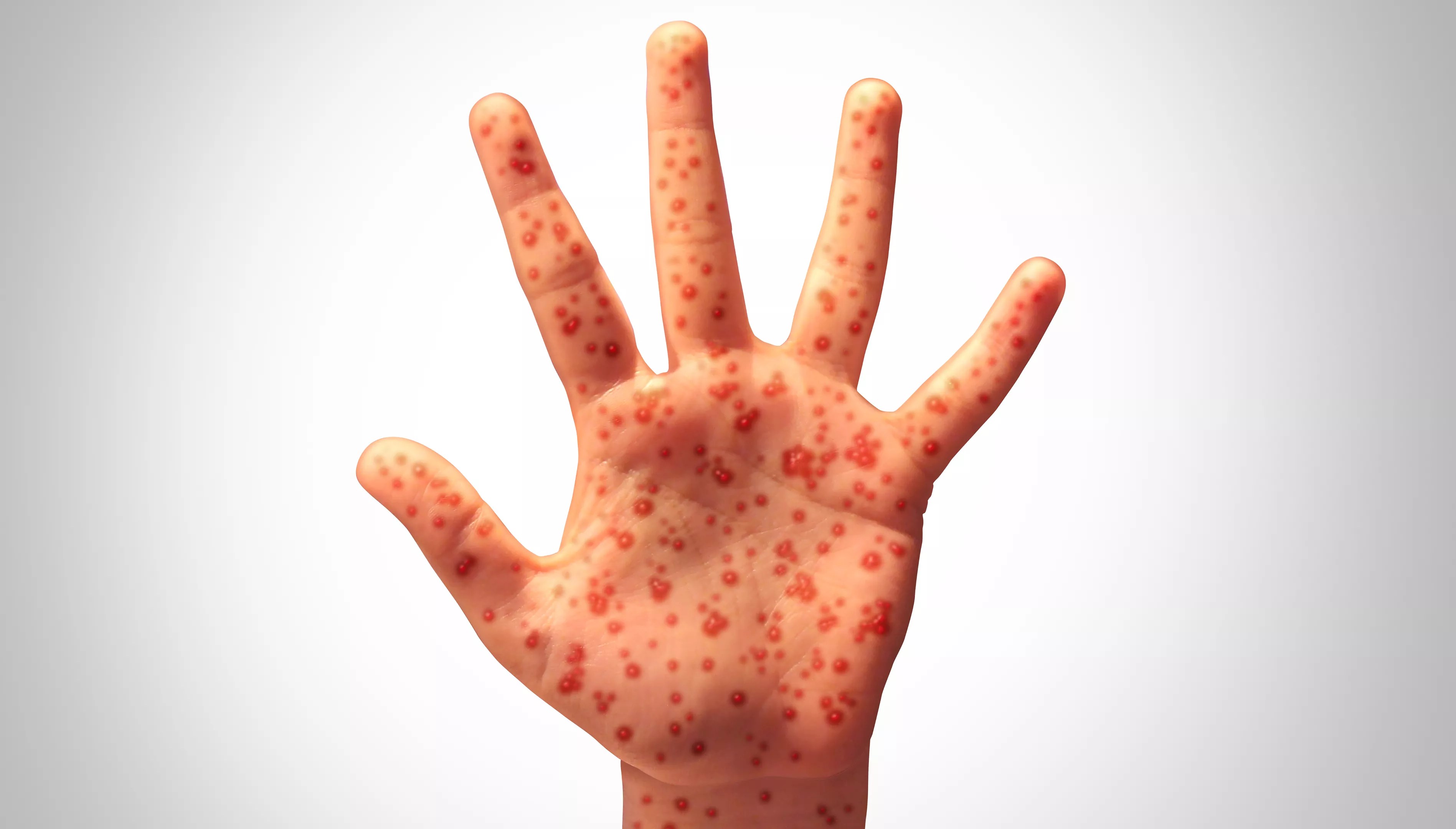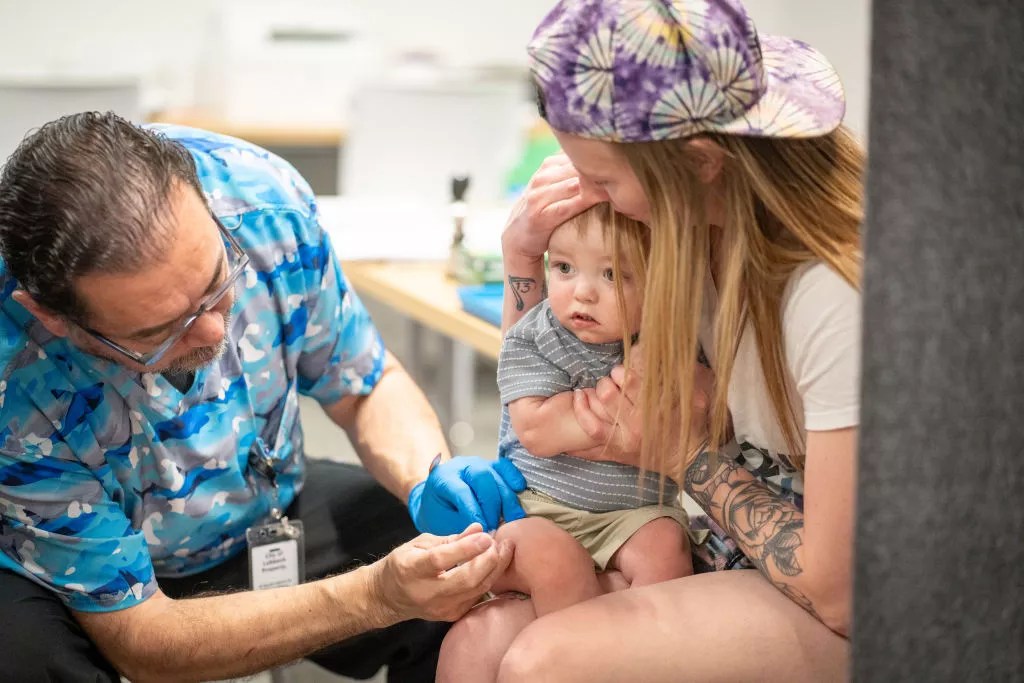
wildpixel/Getty Images

Audio By Carbonatix
The biggest American measles outbreak in years has finally hit Arizona.
On Monday, four cases of measles were confirmed in Navajo County. The cases are the first of the infectious disease that the state has seen so far this year, despite outbreaks in Texas and New Mexico.
For many people in the public health community, this news was only a matter of time, as Arizona’s measles vaccination rate lags well behind the threshold needed for herd immunity. Arizona now joins 33 other states with confirmed cases so far this year. As of June 5, there are nearly 1,170 cases nationwide and 17 outbreaks.
Navajo County is a long strip of the state spanning from the Utah border through the Navajo Nation and Hopi Reservation and south into the San Carlos Apache Reservation. According to the Navajo County Public Health Services District, the infected individuals were not vaccinated and had a recent history of international travel, which is how the majority of measles cases enter the U.S. That suggests the measles cases are not related to the big outbreaks in New Mexico and Texas.
Will you step up to support New Times this year?
At New Times, we’re small and scrappy — and we make the most of every dollar from our supporters. Right now, we’re $15,500 away from reaching our December 31 goal of $30,000. If you’ve ever learned something new, stayed informed, or felt more connected because of New Times, now’s the time to give back.
All of the individuals were also exposed through a single source sometime between May 17-28. The county health department release did not specify in what part of the county the cases were identified.
Navajo County’s health department director Janelle Linn said in a statement that the department’s staff is working closely with the Arizona Department of Health Services “to monitor these cases and any additional cases that may arise. Anyone who believes they may have been exposed or is experiencing symptoms with measles should contact their health care provider immediately for evaluation and testing.”
Measles is a highly infectious disease that travels through the air and hamstrings a person’s immune system to fight infection. It can lead to complications like pneumonia or encephalitis, resulting in hospitalizations or even death. So far this year, 137 people have been hospitalized and three have died from measles, according to the CDC.
Measles symptoms typically appear 7-14 days after exposure and can include a high fever, cough, runny nose, red or watery eyes and a rash beginning at the head and spreading downward. People vaccinated with the measles-mumps-rubella vaccine, known as the MMR vaccine, receive 98% protection from infection after two doses, each of which is generally given to children at 12 months and four years old, respectively.
“Measles is really, really infectious,” said Kelly Murphy, a coordinator at the Arizona Early Childhood Alliance who spent years vaccinating kids as a public health nurse. “When a child has it and is in that infection phase, it’s easy for them to give it to everyone around them. It spreads fast.”

Measles vaccination rates in some Arizona counties are lower than that of the Texas county where the nationwide measles outbreak began.
Jan Sonnenmair/Getty Images
What happens now
The MMR vaccine resulted in measles being considered eliminated in the U.S. in 2000. But a pandemic-related resurgence of vaccine skepticism – spearheaded by vaccine skeptic Robert F. Kennedy Jr., who now leads the U.S. Department of Health and Human Services – has led to a spike in the number of people who aren’t vaccinated against measles.
Communities must have 95% of their population vaccinated to reach herd immunity, which prevents the virus from spreading and protects immunocompromised people and children who are too young to be vaccinated. But Arizona’s vaccination rate is well below that figure, with only 89.3% of kindergartners having received the vaccine.
Navajo County’s vaccination rate is even lower. The county has the fourth-worst MMR vaccination rate in the state, with only 83.1% of kindergarteners fully vaccinated against measles. The epicenter of the original measles outbreak in Texas has a vaccination rate of just 82%.
Currently, state and county public officials are “actively working to identify locations where potential exposure may have occurred,” according to a county press release. From there, they will work to identify any individuals who may have been exposed and continue to contact-trace to identify any additional people who may add to the county’s case count.
“It’s not one person on the phone trying to figure out if there was a positive case. We have a system on standby to be activated,” said Dr. Andrew Saal, the assistant medical director at the Pima County Health Department, told New Times in April. “It’s all hands on deck. That’s how serious measles is.”
If a person comes into a hospital’s emergency room or physician’s office with a rash, fever or measles-like symptoms, doctors and hospital staff immediately isolate the patient and contact the county health department. An on-call epidemiologist with the county asks a series of questions about symptoms and testing, which the county health department facilitates through the state.
Anyone who is confirmed to have measles should monitor symptoms for the next 21 days and “avoid public spaces or high-risk environments during that time,” the county advised. If an unvaccinated individual is identified as exposed, clinicians can administer the MMR vaccine within 72 hours of their exposure, which can prevent serious health effects. The county also encouraged community members to get vaccinated before they’re exposed.
“Getting immunized is the most effective way to protect yourself, your loved ones and your community from measles,” it said.